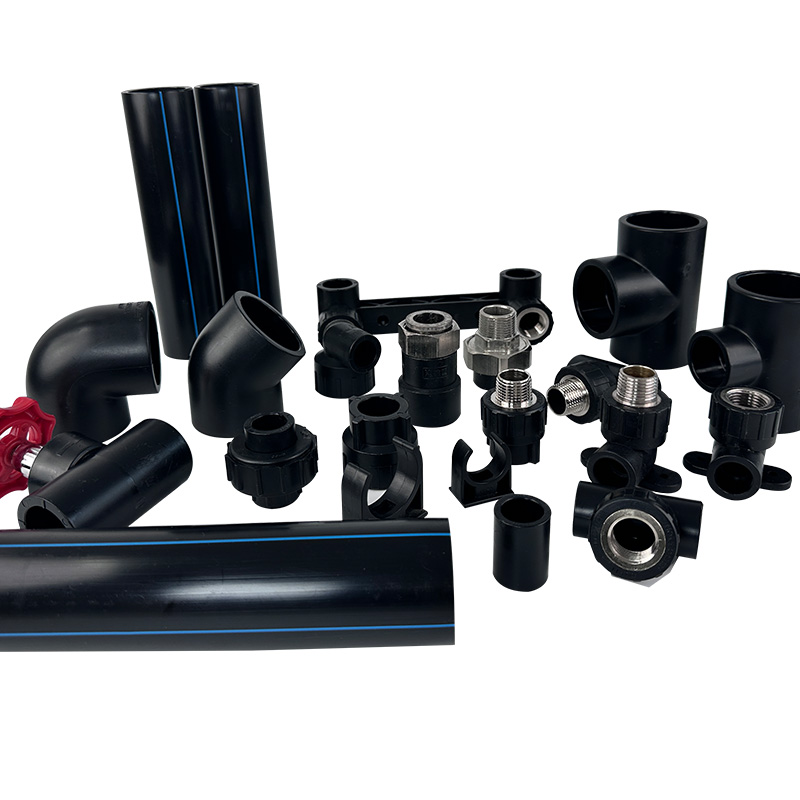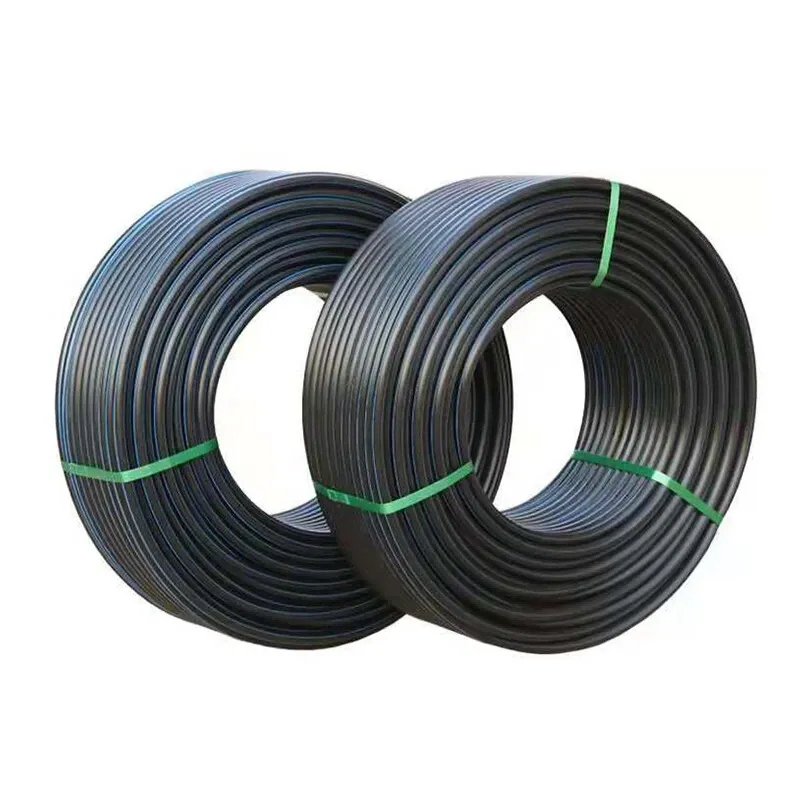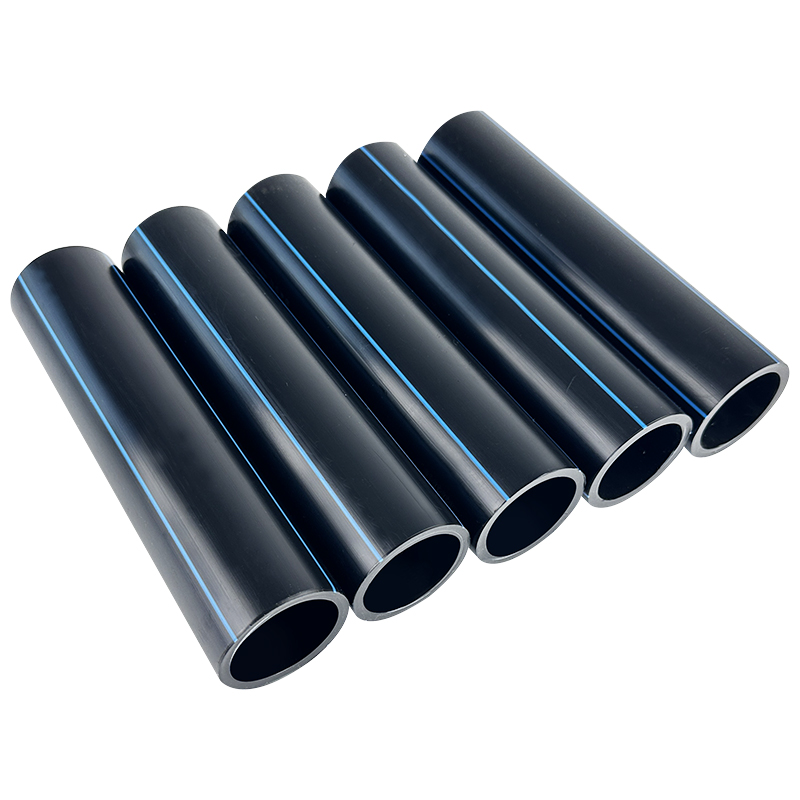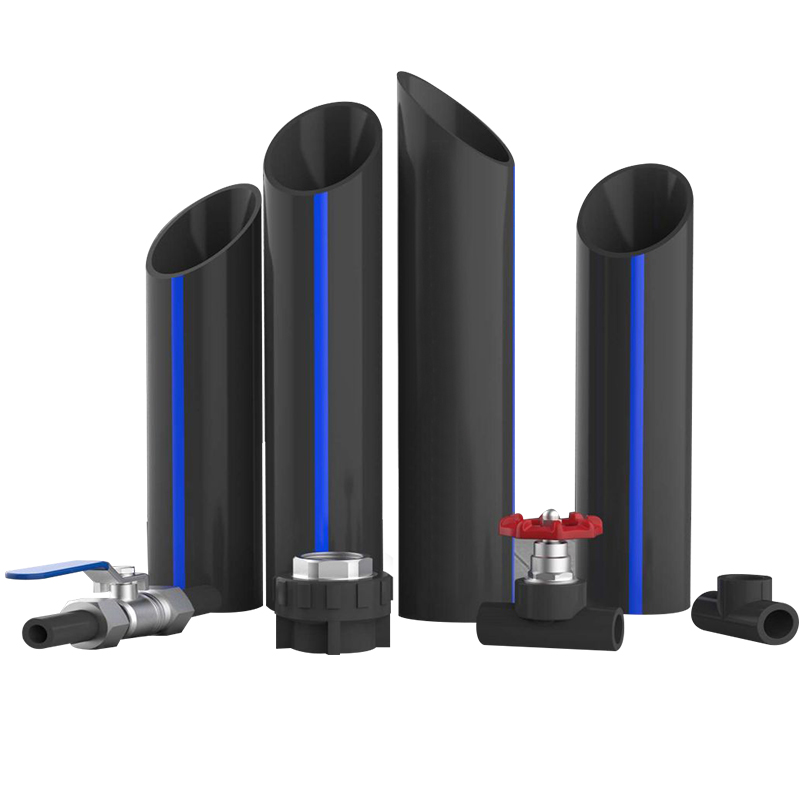HDPE Pipes in Water Supply, Irrigation, and Drainage: What's the Difference?
Categories:News Author: author
When it comes to water management, whether it's supplying drinking water, irrigating farmland, or draining excess rainwater, one material that stands out is HDPE pipe. HDPE stands for High-Density Polyethylene, and pipes made from this material have become increasingly popular worldwide. They are flexible, durable, corrosion-resistant, and cost-effective compared to traditional pipes made from steel or concrete.
But here's a question: are all HDPE pipes the same? The short answer is no.
HDPE pipes are designed and applied in water supply systems, irrigation projects, and drainage solutions is different. In this article, we'll explore how HDPE pipes are used in these three major areas, what makes them different, and why choosing the right type of HDPE pipe matters.
Understanding HDPE Pipes
HDPE pipes are manufactured from thermoplastic polymers. What makes them stand out compared to PVC or metal pipes is:
● Flexibility: They can bend without breaking, which is ideal for tricky terrains.
● Durability: They resist corrosion, chemicals, and even UV rays when properly treated.
● Leak-free connections: Using butt fusion or electrofusion welding, HDPE pipe systems are nearly leak-proof.
● Long service life: They can last over 50 years under normal use.
HDPE pipes are available in different pressure ratings, diameters, wall thicknesses, and colors. For example, blue-striped pipes are usually for potable water supply, while black pipes with green stripes often indicate irrigation or drainage use.
HDPE Pipes in Water Supply
Water supply systems need the highest quality standards because they deliver drinking water. Safety, hygiene, and pressure performance are critical here.
HDPE Water Supply Pipe and Fitting
Key Features of HDPE Pipes for Water Supply
Potable water grade: Pipes must meet food-grade safety standards to ensure no contamination.
● High-pressure resistance: Municipal water networks often work under constant high pressure. HDPE water supply pipes are designed with thicker walls and tested to prevent burst or leakage.
● Corrosion resistance: Unlike steel pipes that rust, HDPE pipes keep water clean.
● Long-distance transport: Because HDPE pipes are lightweight and easy to install, they are perfect for transporting water from treatment plants to urban areas or rural villages.
Common Applications:
● Municipal water pipelines
● Rural drinking water projects
● Industrial water distribution
● Underground water networks
Many cities are now replacing old metal pipes with HDPE water pipes because they reduce leakage losses and extend the life of the infrastructure.
HDPE Pipes in Irrigation
Agriculture depends heavily on reliable irrigation. From small vegetable farms to massive plantations, HDPE irrigation pipes play a central role.
HDPE Agricultural Irrigation Pipe
Why HDPE Pipes Are Perfect for Irrigation?
Flexibility in the field: Farmers can lay them across uneven terrain without needing costly earthworks.
● Cost-effective: They are cheaper to install and maintain than concrete channels or steel pipes.
● Compatibility with fittings: HDPE pipes connect easily to sprinklers, drip systems, and pumps.
● UV resistance: With the right material grade, they can handle long sun exposure in the field.
Common Applications:
● Drip irrigation systems: For efficient water delivery to plant roots.
● Sprinkler irrigation: Wide coverage for crops like wheat or rice.
● Greenhouse irrigation: Controlled water distribution inside greenhouses.
● Large-scale agricultural water supply: Pumping river or reservoir water into fields.
HDPE Pipes in Drainage
Drainage systems are less about delivering clean water and more about removing excess water, wastewater, or stormwater. Here, the demands on HDPE drainage pipes are different.
Key Features of HDPE Drainage Pipes
● Large diameters: To handle heavy water flow, HDPE drainage pipes are usually wider.
● Lightweight installation: Crews can quickly install long lengths without heavy machinery.
● Chemical resistance: Ideal for industrial wastewater or sewage systems.
● Smooth internal walls: Prevent blockages and allow free water flow.
Common Applications:
● Stormwater drainage after heavy rainfall
● Urban sewer networks
● Agricultural field drainage
● Roadside drainage systems
What's the Difference Between Water Supply, Irrigation, and Drainage HDPE Pipes?
Now that we've looked at each application, let's break down the differences in a simple table:
|
Aspect |
Water Supply HDPE Pipe |
Irrigation HDPE Pipe |
Drainage HDPE Pipe |
|
Main Function |
Deliver clean drinking water |
Supply water to crops efficiently |
Remove excess or wastewater |
|
Quality Standard |
Potable water grade, hygienic |
Flexible, UV-resistant |
Strong flow, chemical resistant |
|
Pressure Requirement |
High pressure |
Medium to high (depends on system) |
Low to medium |
|
Typical Diameter |
Small to medium (up to 630mm) |
Small to large (depends on farm) |
Large (for stormwater/sewage) |
|
Service Life |
50+ years |
20–40 years (field exposure) |
30+ years |
HDPE Pipe and Fitting Systems for Different Applications
When it comes to actual projects, different applications of HDPE pipes require not just the pipe itself but also a complete range of fittings and accessories to ensure a reliable system. Below is a quick breakdown:
1. HDPE Pipes and Fittings for Water Supply
● HDPE water supply pipes (blue stripe or black with blue marking)
● Electrofusion fittings (couplers, elbows, tees) for leak-proof connections
● Compression fittings for quick installation in smaller diameter pipelines
● Valves and adaptors to connect HDPE pipes with pumps or steel pipes
● Butt fusion fittings for high-pressure municipal water networks
2. HDPE Pipes and Fittings for Irrigation
● HDPE irrigation pipes (black with green stripe)
● Sprinkler fittings and connectors for farm irrigation
● Drip irrigation accessories, like take-off connectors and drip laterals
● Irrigation valves and filters to regulate water flow
● End caps, elbows, tees, and reducers to build flexible irrigation layouts
3. HDPE Pipes and Fittings for Drainage
● HDPE drainage pipes (large diameter, corrugated or smooth wall)
● Manhole connectors and inspection chambers
● Sewer fittings such as bends, reducers, and branches
● Stormwater collection basins connected to HDPE drainage lines
● Adapter fittings to connect drainage pipes with concrete or steel outlets
Why Choose ULP for HDPE Pipes and Fittings?
When investing in water management infrastructure, choosing the right HDPE pipe manufacturer is crucial. This is where ULP comes in.
ULP offers a complete series of HDPE pipes and fittings suitable for water supply, irrigation, and drainage applications.
✅ Customization (OEM/ODM): Size, color, and packaging can be tailored to project requirements.
✅ Full range of fittings: From elbows, tees, reducers to electrofusion fittings – everything needed for a leak-free system.
✅ Competitive prices: ULP provides cost-effective solutions without compromising quality, enabling contractors and distributors to easily find the ideal solution.
✅ Quality assurance: Every pipe is tested to meet international standards.
✅ Expert support: ULP professional sales team offers project-specific solutions for plastic piping systems.
HDPE Water Plumbing and Fitting System
FAQs about HDPE Pipes in Water Supply, Irrigation, and Drainage
Q: What makes HDPE pipes better for water supply compared to PVC or steel pipes?
A: HDPE water supply pipes are corrosion-resistant, leak-free when joined with fusion methods, and last over 50 years. Unlike steel pipes, they do not rust, and unlike PVC, they handle high pressure better.
Q: Can HDPE pipes be used in underground installations?
A: Absolutely. HDPE pipes are highly flexible and can withstand ground movement and soil pressure. They are commonly used for underground drainage systems, municipal pipelines, and agricultural irrigation lines.
Q: Can the same HDPE pipe be used for both irrigation and drainage?
A: Not exactly. HDPE irrigation pipes are designed for flexibility and UV resistance in farm environments, while HDPE drainage pipes are usually larger in diameter and optimized for heavy water flow.
Q: What fittings are needed for HDPE irrigation systems?
A: Common fittings include elbows, tees, reducers, sprinkler connectors, and drip irrigation take-off fittings. These ensure that HDPE irrigation pipes distribute water efficiently to crops.
Q: How are HDPE drainage pipes installed for stormwater management?
A: HDPE drainage pipes are lightweight and easy to install with butt fusion or electrofusion joints. They connect with inspection chambers, manholes, and stormwater basins to quickly move water away from roads and fields.
Q: How long do HDPE pipes last in irrigation systems?
A: With proper UV-stabilized material, HDPE irrigation pipes can last 20–40 years even in outdoor conditions, making them a reliable choice for farmers.
Q: How can I choose the right HDPE pipe for my project?
A: It depends on the application:
● For water supply, choose potable-grade, high-pressure pipes.
● For irrigation, pick UV-resistant pipes compatible with drip or sprinkler systems.
● For drainage, go with large-diameter pipes designed for stormwater or sewage.
The sales team of ULP can help recommend the best option.
Conclusion
HDPE pipes are versatile, but their application in water supply, irrigation, and drainage comes with specific requirements. Knowing these differences helps you select the right pipe for your project, ensuring efficiency, safety, and durability.
Whether you need a potable water pipeline, a reliable irrigation system, or a strong drainage solution, HDPE pipes are the answer. And with a trusted manufacturer like ULP, you not only get durable pipes but also access to a full range of fittings, custom options, and professional support. Planning a project in water supply, irrigation, or drainage? Feel free to contact ULP.






